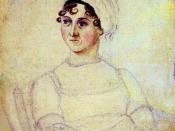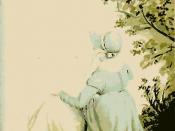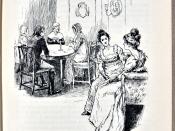In the late eighteenth century and early nineteenth century, the world was a much different place than today. There was not much thought to one's civil rights and societal responsibility for the well being of children. A common right, in current perspective, a public education, was unheard of. In that day, there was no centrally-organized system of state-supported education. Instead, upper-class children might be educated at home by their parents, particularly when young; by live-in governesses, tutors, or by going off to a private boarding school. Of course, women were not allowed to attend the boarding schools or the universities. Since women did not usually have careers and were not allowed to be directly involved in politics, there was little need for such higher education. Most preferred that women receive a practical (including cookery, needlework, music, drawing, and dancing) and religious training for their domestic role. Mastering these disciplines was essential in attracting a suitable husband, so that one might be taken care of for the rest of her days.
There were a few exceptions to this rule of society. Some women did receive true educations and chose not to marry; of course, the majority of these women's families were wealthy. Two famous authors of the time, Jane Austen and Emily Dickenson, both chose this independent path for themselves, which was looked upon as strange. These two women were ahead of their time and showed their opposition of the statis quo through their works of literature.
Austen's work, Emma, was a social satire of mankind's inclination to assign meaning and significance to the trivial customs of the time (especially those concerned with women). Emma, the title character in the work, was free from the need to marry for social rank or financial security. She chose her own path and it...



Independence
Wow.
0 out of 1 people found this comment useful.